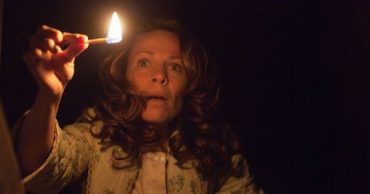
credit: Jurassic Park
The film Jurassic Park was something that was ahead of its time. When I first watched it, I wouldn’t have thought it came before the 21st century. The plot line and the world where the story revolved were works of science that weren’t much-given attention in its year of release.
Jurassic Park was the predecessor of Jurassic World, which also ran on the same premise where human characters were trying to do something inside a locality of dinosaurs. Its successors were The Lost World (1997), Jurassic Park III (2001), Jurassic World (2015), Jurassic World: Fallen Kingdom (2018), and Jurassic World Dominion (2022). From inspiration, it also gave rise to numerous spin-off games, like Jurassic Park Builder on Facebook, which was along the likes of other casual building games like Farmville or Cityville.
We hope we would be able to cover the franchise as it was one of the most successful dinosaur movie franchises of all time, with The Land Before Time probably its top competitor. But today, we will only talk about the first installment. We will analyze the events of the movie and examine why it was a great movie that did not belong in its time era!

credit: Jurassic Park
Worldbuilding is a just-right blend of reality and fiction
When you think of most science fiction films, they tend to be set in a place or era far beyond the human psyche. For example, the Star Wars franchise was set in, to quote, “A long time ago in a galaxy far far away.” Dune, on the other hand, is set on some planetary system that our civilization wouldn’t even live to see (assuming the planets and all that were real).
However, Jurassic Park did not employ an entirely different environment for its movie. The island where the park is located, Isla Nublar, was a fictional island based on an island off the coast of the real country of Costa Rica. The human characters were completely normal. They could not telepathically control objects with their mind or have some extra protrusions. They were as human as they could be. And then, the dinosaurs were introduced as fictional elements.
This made Jurassic Park a relatable and not a hard-to-digest film. It was anchored from something real, in this case, the geographical locations in a real country. The mountains, the waters, and the terrain were not alien to us, so we could easily understand what those were and how they worked and were used.
The movie gave fictional elements home in our real world so that we could appreciate them better.

credit: Jurassic Park
Introduction to genetics
In continuation of the previous section, we also have the science aspect of this film. It also combined fictional elements with real processes, basically creating the dinosaurs. As a recap, the dinosaurs were created through genetic reconstruction. To be more precise, dinosaur DNA was extracted from prehistoric mosquitoes preserved in amber. However, the dinosaur DNAs weren’t always complete and could have been subjected to degradation or disintegration of the material from not being able to be preserved entirely. What lacks were filled through the DNA of modern-day animals. Probably they used a chicken DNA to reconstruct a Tyrannosaurus Rex.
The dinosaurs were intentionally created to be all females so that no one would have the ability to produce sperm cells and reproduce. Of course, if the dinosaurs were able to reproduce, it would be a lot of problems.
Let me repeat. The movie was released in 1993. During that year, mankind hadn’t yet achieved such a level of sophistication and advancement in the field of genetics. However, it was when mankind was slowly lighting the fire in this field. And three years after the film, the first animal was successfully cloned, thanks to genetics.
Genetic engineering was the norm that created Jurassic Park. It was created in such a way that not a lot of people could notice if the processes were right or wrong. And that was where the fiction came in. They made the process look so sophisticated to the point that it became convincing, making the movie a good piece of fiction, yet with something that humans could relate to. In this case, the thing humans could relate to was the profound interest in genetics.
 Follow Us
Follow Us




